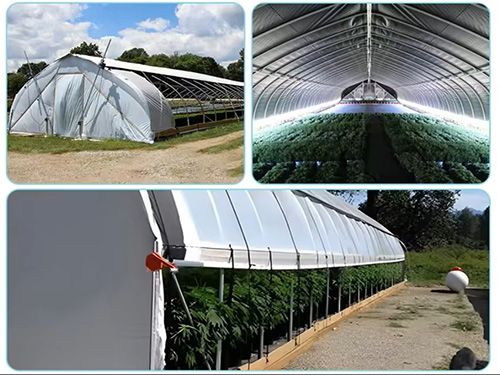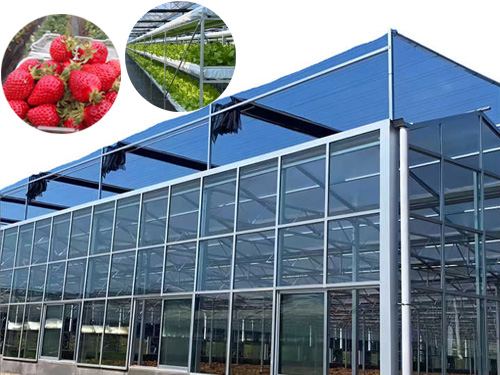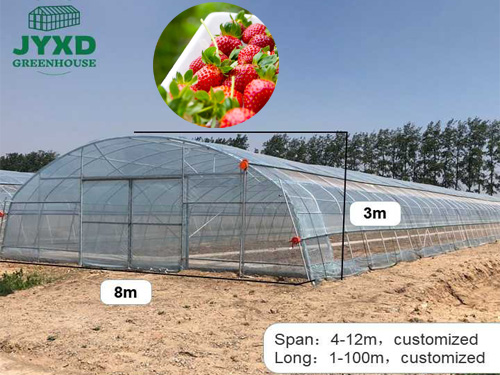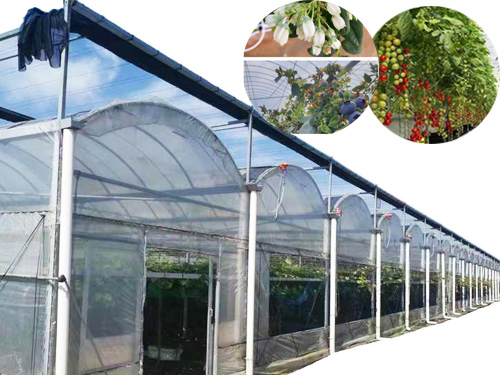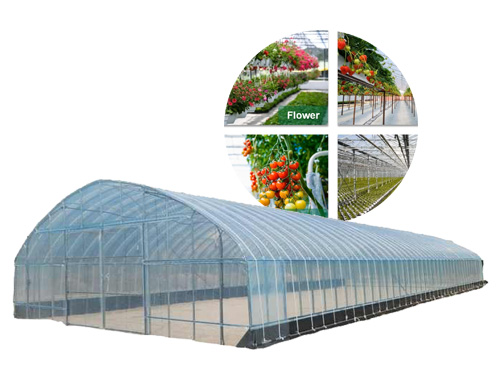NEWS DETAILS
NEWS INFORMATION
Smart Greenhouse Automation: IoT Sensor Networks vs. Manual Monitoring Tradeoffs
AUTHOR:jyxd-greenhouse DATE:2025-04-11 19:00:44 HITS:68
The adoption of smart greenhouse automation is revolutionizing modern agriculture, offering growers unprecedented control over environmental conditions. At the heart of this transformation are IoT (Internet of Things) sensor networks, which provide real-time data for precise climate management. However, traditional manual monitoring still has its place, especially for smaller operations or those with budget constraints. This article explores the tradeoffs between IoT sensor networks and manual monitoring, helping growers make informed decisions about smart greenhouse automation.
Why Smart Greenhouse Automation Matters
Smart greenhouse automation enhances productivity, resource efficiency, and crop quality by:
· Optimizing Environmental Conditions: Maintaining ideal temperature, humidity, light, and CO2 levels.
· Reducing Labor Costs: Automating repetitive tasks like irrigation and climate control.
· Improving Yields: Ensuring consistent growing conditions for healthier plants.
· Enabling Remote Monitoring: Allowing growers to manage greenhouses from anywhere.
While IoT sensor networks are at the forefront of this revolution, manual monitoring remains a viable option for certain scenarios.
1. IoT Sensor Networks: The Future of Smart Greenhouses
IoT sensor networks are the backbone of smart greenhouse automation, providing real-time data and automated control. Here’s how they work and their benefits:
Key Features:
· Sensors: Measure temperature, humidity, light, soil moisture, CO2 levels, and more.
· Connectivity: Transmit data to a central system via Wi-Fi, Bluetooth, or cellular networks.
· Automation: Control systems like irrigation, ventilation, and lighting based on sensor data.
· Data Analytics: Provide insights for optimizing greenhouse conditions and crop management.
Benefits:
· Precision: Deliver accurate, real-time data for precise climate control.
· Efficiency: Reduce resource waste by automating irrigation, lighting, and ventilation.
· Scalability: Easily expandable to accommodate larger or multiple greenhouses.
· Remote Access: Monitor and control greenhouse conditions from anywhere via smartphones or computers.
Challenges:
· Initial Cost: High upfront investment in sensors, connectivity, and automation systems.
· Technical Expertise: Requires knowledge to install, configure, and maintain IoT systems.
· Dependence on Technology: Vulnerable to connectivity issues or sensor malfunctions.
2. Manual Monitoring: A Traditional Approach
Manual monitoring involves growers physically checking and adjusting greenhouse conditions. While less advanced, it remains a practical option for certain operations.
Key Features:
· Hands-On Approach: Growers use tools like thermometers, hygrometers, and soil moisture meters to assess conditions.
· Human Judgment: Decisions are based on experience and observation.
· Flexibility: Adjustments can be made immediately without relying on technology.
Benefits:
· Low Cost: Minimal investment in equipment and technology.
· Simplicity: No need for technical expertise or connectivity.
· Direct Observation: Growers can spot issues like pests or diseases that sensors might miss.
Challenges:
· Labor-Intensive: Requires significant time and effort for regular monitoring.
· Inconsistency: Human error or delayed adjustments can lead to suboptimal conditions.
· Limited Scalability: Difficult to manage larger or multiple greenhouses effectively.
3. Tradeoffs Between IoT Sensor Networks and Manual Monitoring
Choosing between IoT sensor networks and manual monitoring depends on factors like budget, scale, and technical expertise. Here’s a comparison to help you decide:
Cost:
· IoT: High upfront cost but long-term savings through efficiency and reduced labor.
· Manual: Low upfront cost but higher labor expenses over time.
Accuracy:
· IoT: Provides precise, real-time data for optimal conditions.
· Manual: Relies on human judgment, which can be less accurate.
Scalability:
· IoT: Easily scalable for larger or multiple greenhouses.
· Manual: Limited scalability due to labor constraints.
Flexibility:
· IoT: Automated systems may lack the adaptability of human judgment.
· Manual: Growers can make immediate, experience-based adjustments.
Reliability:
· IoT: Vulnerable to technical issues like sensor malfunctions or connectivity problems.
· Manual: Dependent on consistent human effort and attention.
4. Hybrid Approach: Combining IoT and Manual Monitoring
For many growers, a hybrid approach offers the best of both worlds. Here’s how to integrate IoT sensor networks with manual monitoring:
· Use IoT for Core Functions: Automate climate control, irrigation, and lighting to reduce labor and improve efficiency.
· Manual Checks for Oversight: Regularly inspect plants and greenhouse conditions to identify issues IoT sensors might miss.
· Data-Driven Decisions: Use IoT data analytics to inform manual adjustments and optimize operations.
5. Case Studies: Smart Greenhouse Automation in Action
Commercial Greenhouse in the Netherlands:
· Solution: Fully automated IoT sensor network for climate control and irrigation.
· Result: Increased yields by 25% and reduced water usage by 30%.
Small-Scale Farm in California:
· Solution: Manual monitoring with occasional IoT sensors for specific crops.
· Result: Maintained profitability while minimizing upfront costs.
Hybrid Operation in Japan:
· Solution: Combined IoT automation with regular manual checks.
· Result: Achieved consistent crop quality and reduced labor costs.
6. Best Practices for Implementing Smart Greenhouse Automation
To maximize the benefits of smart greenhouse automation, follow these best practices:
Assess Your Needs:
· Evaluate Scale: Determine whether IoT, manual, or a hybrid approach suits your operation.
· Set Goals: Define objectives like reducing labor, improving yields, or conserving resources.
Invest Wisely:
· Start Small: Begin with essential IoT sensors and expand as needed.
· Choose Reliable Systems: Select reputable IoT providers with strong technical support.
Train Your Team:
· Technical Skills: Educate staff on installing, configuring, and maintaining IoT systems.
· Observation Techniques: Train growers to complement IoT data with manual checks.
Monitor and Adapt:
· Analyze Data: Use IoT analytics to identify trends and optimize conditions.
· Adjust Strategies: Continuously refine your approach based on results and feedback.
Conclusion
Smart greenhouse automation, powered by IoT sensor networks, offers unparalleled precision and efficiency, but manual monitoring remains a viable option for smaller or budget-conscious operations. By understanding the tradeoffs and adopting a hybrid approach where appropriate, growers can optimize their greenhouse management for higher yields, lower costs, and sustainable practices.
For more expert tips and high-quality greenhouse solutions, visit our website and take your farming practices to the next level. Let’s grow smarter and cultivate a greener future together!
![]()
Meta Description: Explore the tradeoffs between IoT sensor networks and manual monitoring in smart greenhouse automation. Learn how to optimize greenhouse management for higher yields and efficiency.
Hebei Juyou Xinda Greenhouse Facilities Co.,Ltd.
Copyright © 2024-2025 https://www.jyxd-greenhouse.com. All Rights Reserved Hebei Juyou Xinda Greenhouse Facilities Co.,Ltd.Copyright





 Current Location:
Current Location:


